On 12/24/1997, the Overhanging Rock, also known as the Hanging Rock, was entered in the National Register of Historic Places.
From the US Department of the Interior National Park Service application…
To protect the Hanging Rock, in 1924, the 24,000 sq ft strip of land surrounding it was purchased by Lidie McFarland Anderson (Mrs. J. Aubrey Anderson), who, in turn, donated it to the Valley Forge Historical Society to ensure its perpetual preservation.
On the anniversary of the march to Valley Forge, December 19, 1924, a bronze plaque was placed on the Rock to commemorate the historic march by the Continental Troops in December 1777. The plaque read: “General Washington and the American Army passed under this rock on the march to Valley Forge December 19, 1777. The overhanging rock was presented to the Valley Forge Historical Society for perpetual preservation” The bronze plaque was removed sometime in the 1950’s without permission. The location of the plaque is unknown.
The Hanging Rock has been altered in appearance over the years most significantly by man as well as the natural erosion process. Proposals for the removal have been submitted by the Pennsylvania Highway Department and later by PennDot.
Another threat to the rock occurred in 1954. The plans included a “shaving” back of the rock or the entire destruction of it. Holes were drilled in the rock for the placement of dynamite to blow it up, but again, the public and the local preservation community banded together to save the rock once more. Almost twenty years later, the same threat cropped up once more. The discussion centered around the “shaving” back of the rock. The project was to be completed in 1972, however, the state lacked the funds to proceed with the project. In 1974, the Pennsylvania Department of Transportation filed to take the rock by eminent domain; but again the funding was not there and the rock remained. The question of its future existence on Gulph Road fired up the public debate once more in the 1980’s and again in 1995.
While the appearance has changed, the rock is still— and will continue to be what it always has been: a rock hanging over the road. However, the Hanging Rock continues to be a recognizable landmark associated with the Revolutionary War and much, much more. Hundreds of people have banded together over the years in support of the Rock. The battles they fought to preserve it are a testimony to their conviction for what the Rock represents.
The entire 231 page report can be found at National Register of Historic Places and National Historic Landmarks Program Records. https://catalog.archives.gov/id/71995725
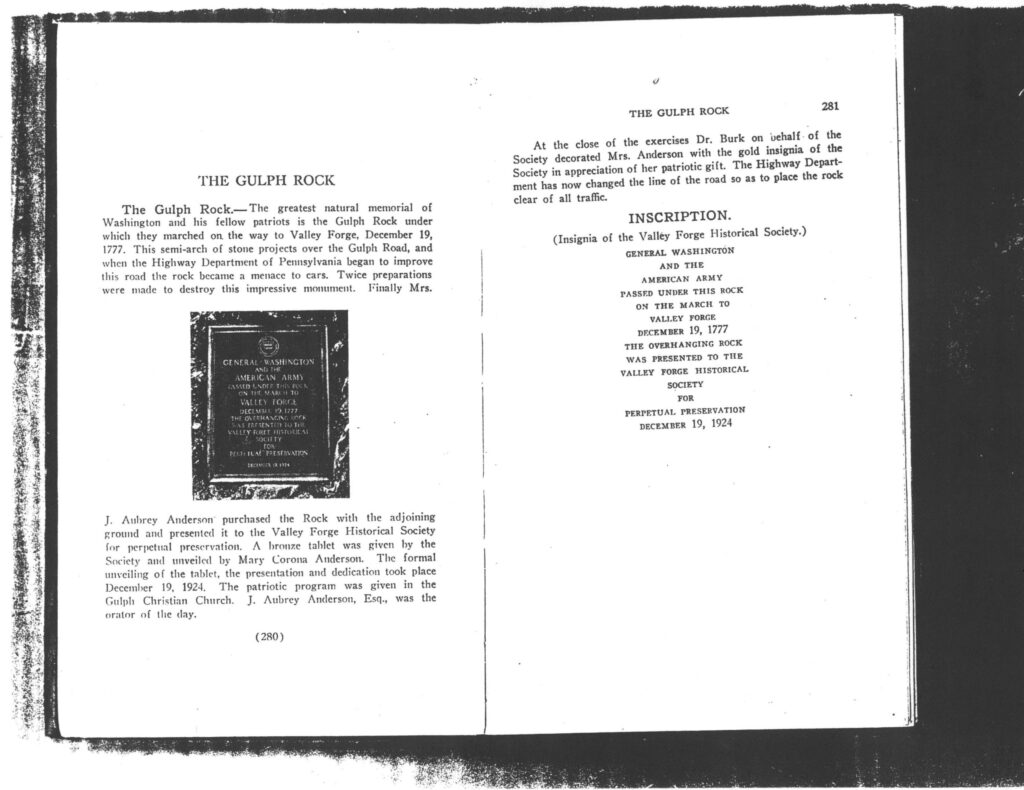
National Register of Historic Places and National Historic Landmarks Program Records, attachment to the application.
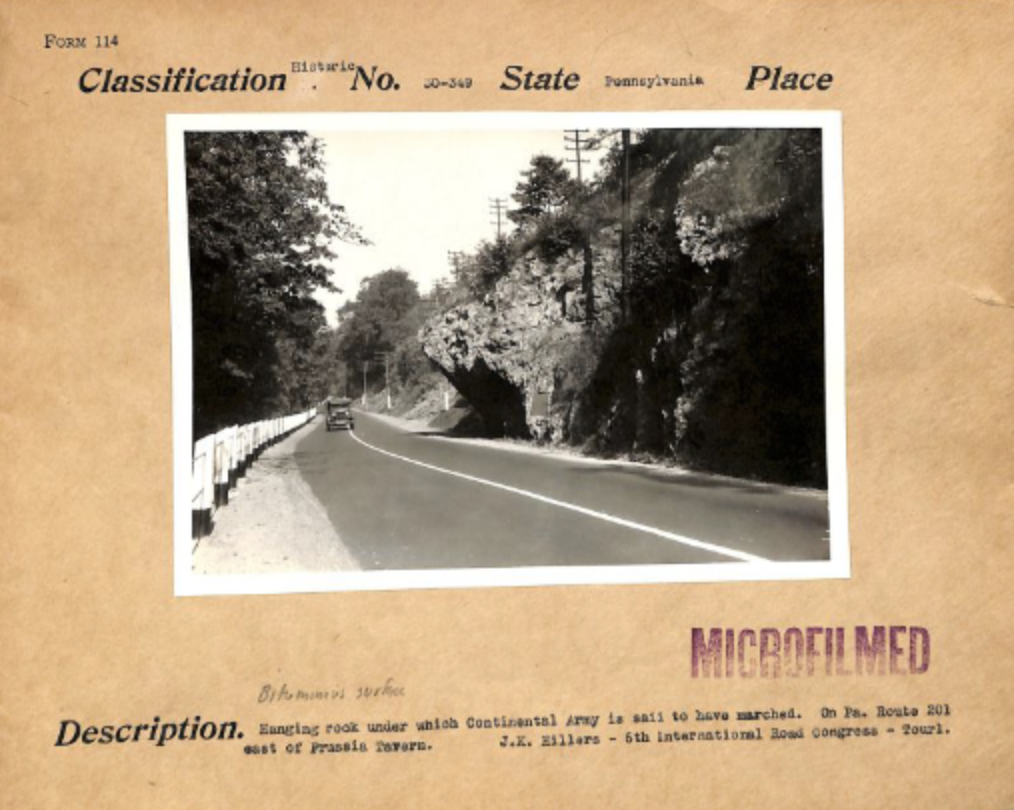
Hanging Rock Under Which Continental Army is Said to Have Marched From RG: 30 Historical Photograph Files Original caption: Hanging rock under which Continental Army is said to have marched. On Pa. Route 201 east of Prussia Tavern. J. K. Hillers – 6th International Road National Archives Identifier: 135803764 Local Identifier: 30-N-30-349 Container Identifier: 296 Creator: Department of Commerce. Bureau of Public Roads. 8/20/1949-4/1/1967
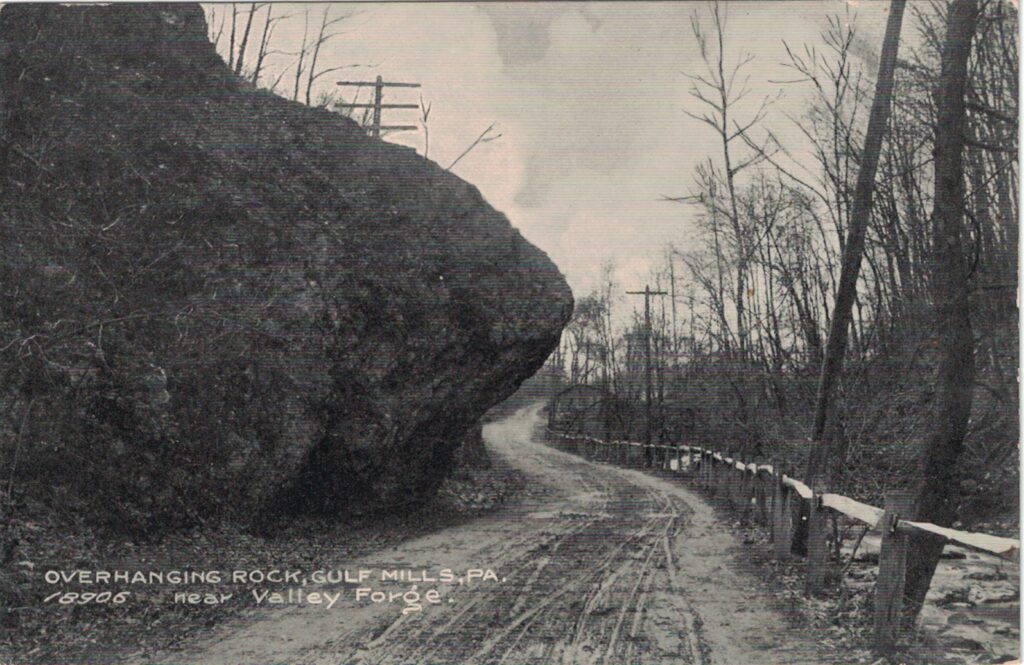
Hanging Rock, Gulph Road (postcard)
King of Prussia Historical Society Digital Archive
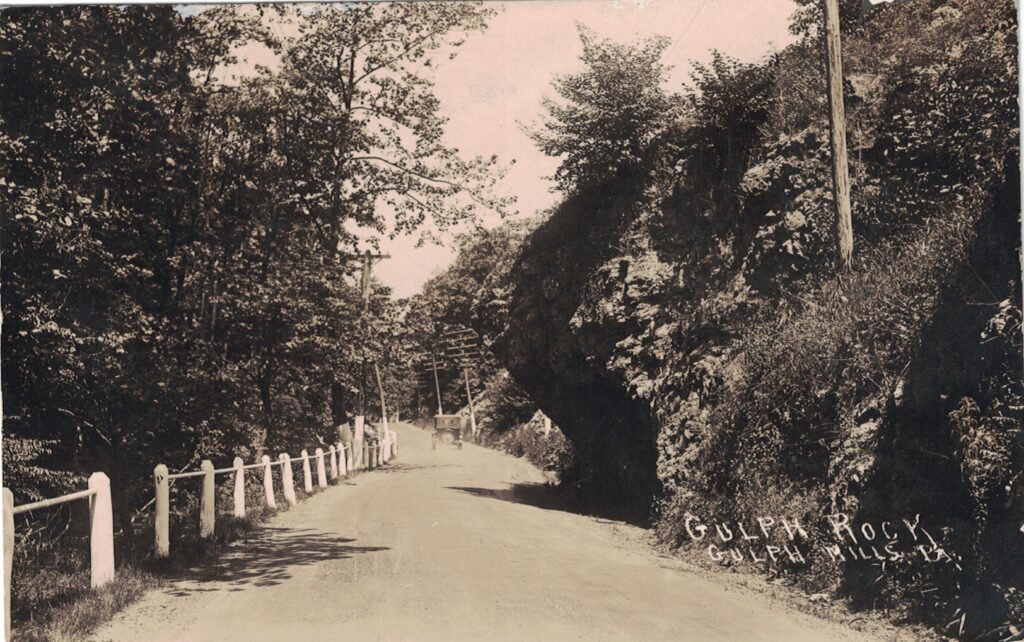
Hanging Rock, Gulph Road (postcard)
King of Prussia Historical Society Digital Archive
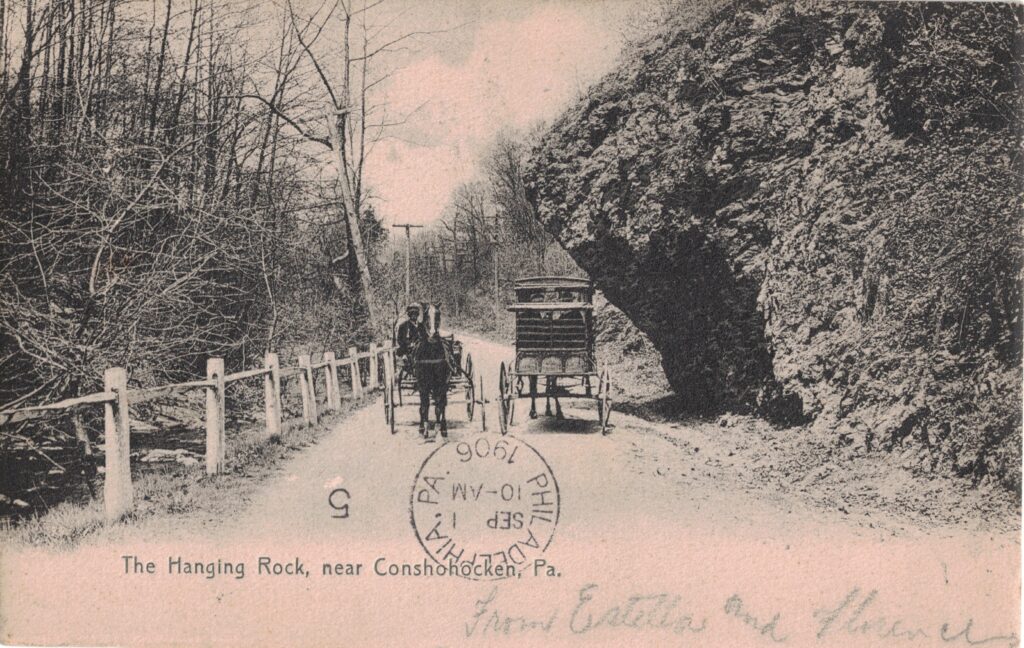
Hanging Rock (postcard)
King of Prussia Historical Society Digital Archive
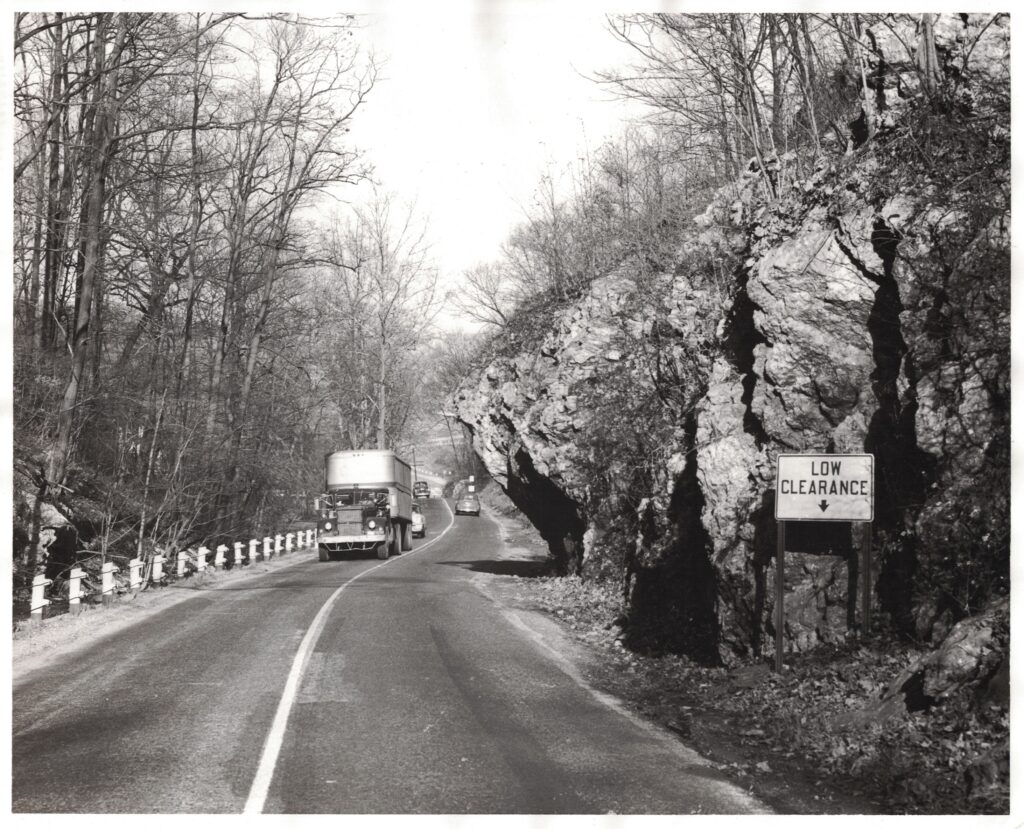
Hanging Rock Photo 1954
Photograph of the Hanging Rock and traffic on Gulph Road by Bill Harris, long time photographer for the Main Line Times. The photo shows the extent to which the rock used to extend into traffic, before PennDot removed part of it.
King of Prussia Historical Society Digital Archive
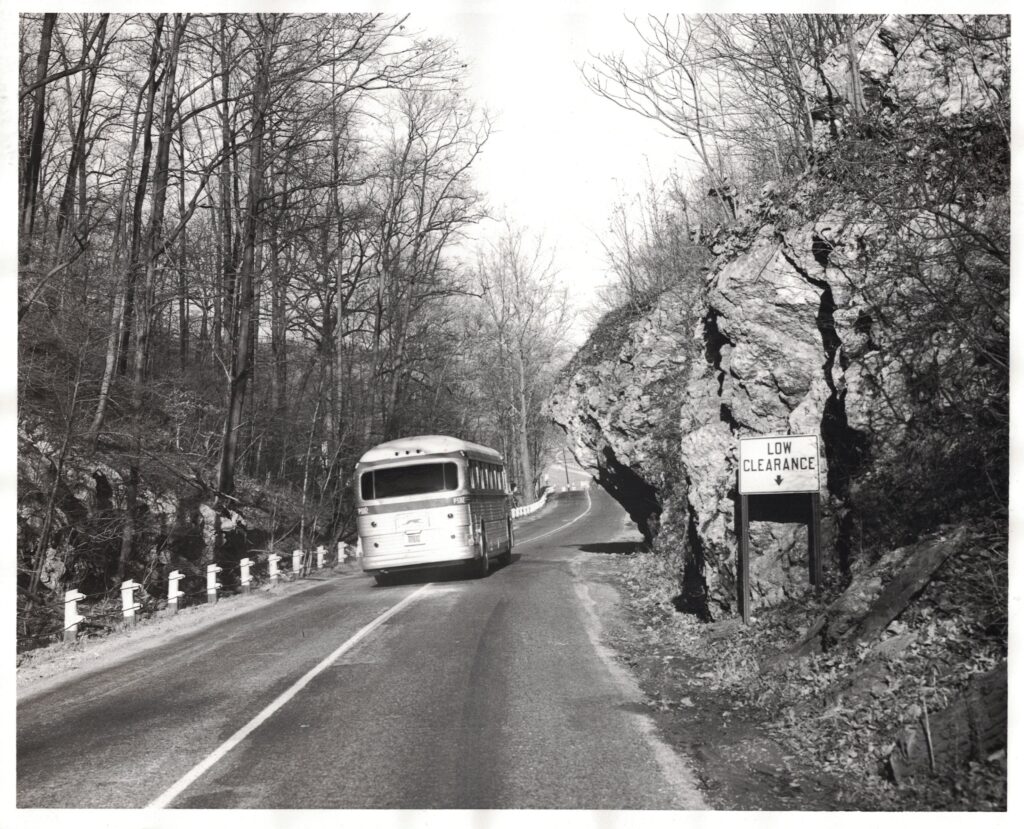
Bus Making Its Way Around Hanging Rock, 1954
Photograph of a bus swinging around Hanging Rock on Gulph Road in 1954, taken by Bill Harris, long time photographer for Main Line Times. The photo shows the extent to which the rock intruded into traffic before its partial removal by PennDot.
King of Prussia Historical Society Digital Archive
